Sunday in Silverstone was something of an unprecedented situation for MotoGP, at least since the word “MotoGP” became a reality. Not since Misano 1990 had every single rider in every single class walked away with precisely the same points with which they entered the weekend; and not since Austria 1980 had every World Championship race been cancelled in a motorcycle Grand Prix weekend. That weekend was due to snow. In fact, this weekend we saw the first cancelled races since Indianapolis 2008, when the 250 GP was cancelled because of a hurricane.
The situation in Silverstone was similar in at least one way to all of these events. Indianapolis 2008 was cancelled because of impending rain, and the races in Silverstone were rescheduled in an attempt to avoid the worst of the day’s precipitation. In addition Austria ’80 saw all races cancelled, and Misano 1990 was cancelled due to rain. But none of these perhaps had the controversy behind them as this weekend’s British Grand Prix did (well, maybe Misano ’90, but in a different way). All of the previous situations were brought about purely because weather conditions prevented racing: you can’t race in the snow, you can’t race in a hurricane and you can’t race in monsoon-like rain, but Silverstone 2018 was such a disaster because of the track surface.
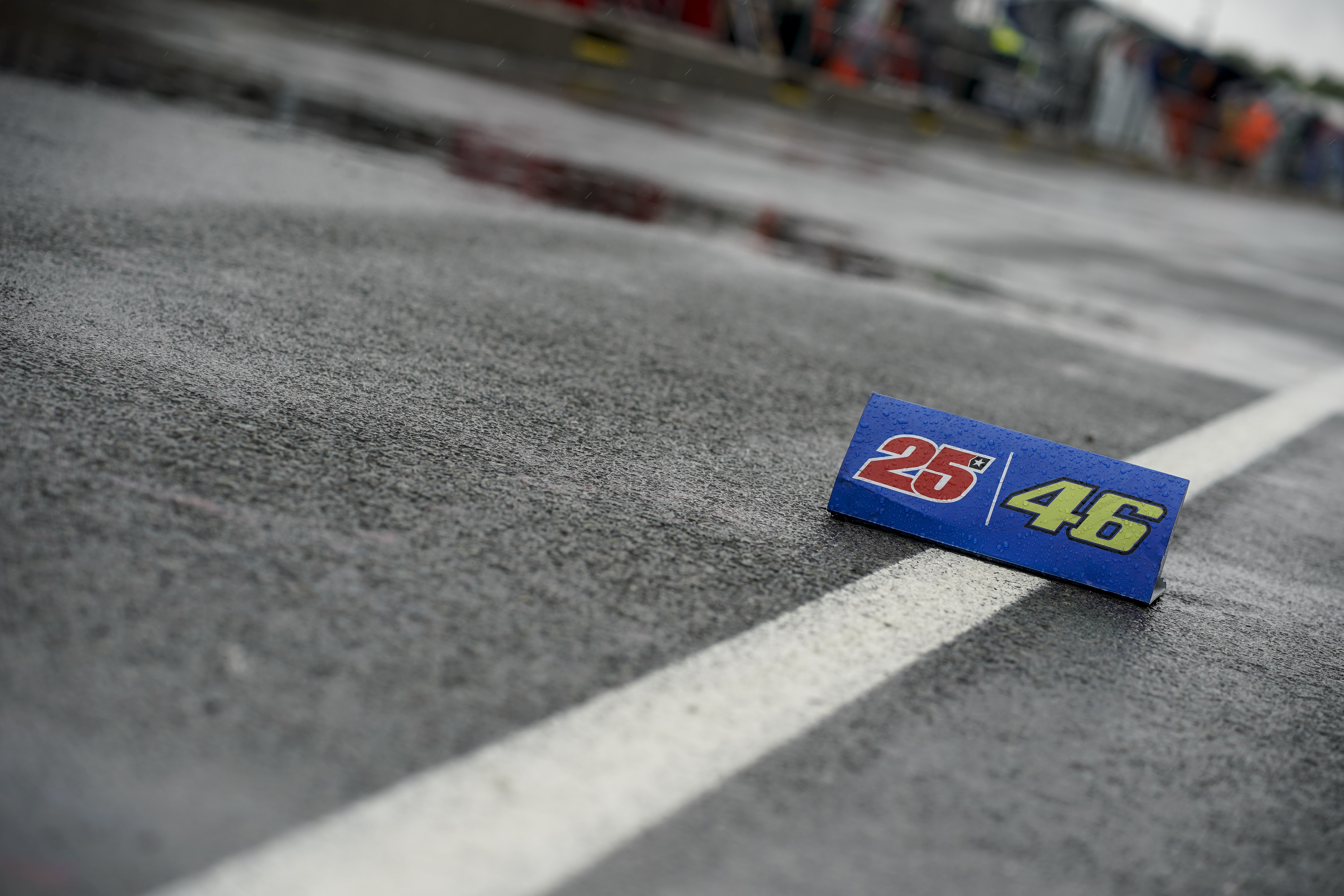
So, what made Silverstone such a disaster this year? Well, the problem was identified in July, at Formula One’s British Grand Prix. Atypically, it was not F1’s fault, maybe they made it worse, but not significantly – the problem was already there. After the first practice of the F1 weekend back in July, drivers were almost unanimous in opining that the new Silverstone circuit was more bumpy than before, Lewis Hamilton even spoke to Cal Crutchlow about the situation, saying that Silverstone was “the bumpiest he had ever driven”. This sparked worry for MotoGP.
The circuit had resurfaced its entire 3.6 mile track over the winter with the precise goals of improving grip consistency (previously there had been four different surfaces around the track) and erasing bumps. The second point there was of most immediate concern for the riders; Silverstone was not in a state akin to Barcelona or Jerez in terms of grip, but the bumps made riding there quite dangerous, because bumps make everything very unpredictable and difficult to manage, and when in a group it can be hard to pick out where the bumps are, which makes it easy to crash. You can say “the riders should be able to ride through them, they are the best in the world,” but if you cannot see where the danger is, how are you supposed to avoid it? That is the danger of bumps, and in Silverstone they were particularly bad.
The new surface aimed to rectify that, and as far as Franco Uncini (the MotoGP Safety Officer – he homologates the circuits) was concerned, in February it was fine, and it was in March, too. Cal Crutchlow concurred with the 1982 500cc World Champion when he rode a Honda RC213V-S there for a media day, with the opinion that the surface was generally fine, bar a couple of spots that were more bumpy. Uncini had made the same deductions before Crutchlow, which as encouraging because there was agreement. The circuit was not 100% perfect, but it was damn close.
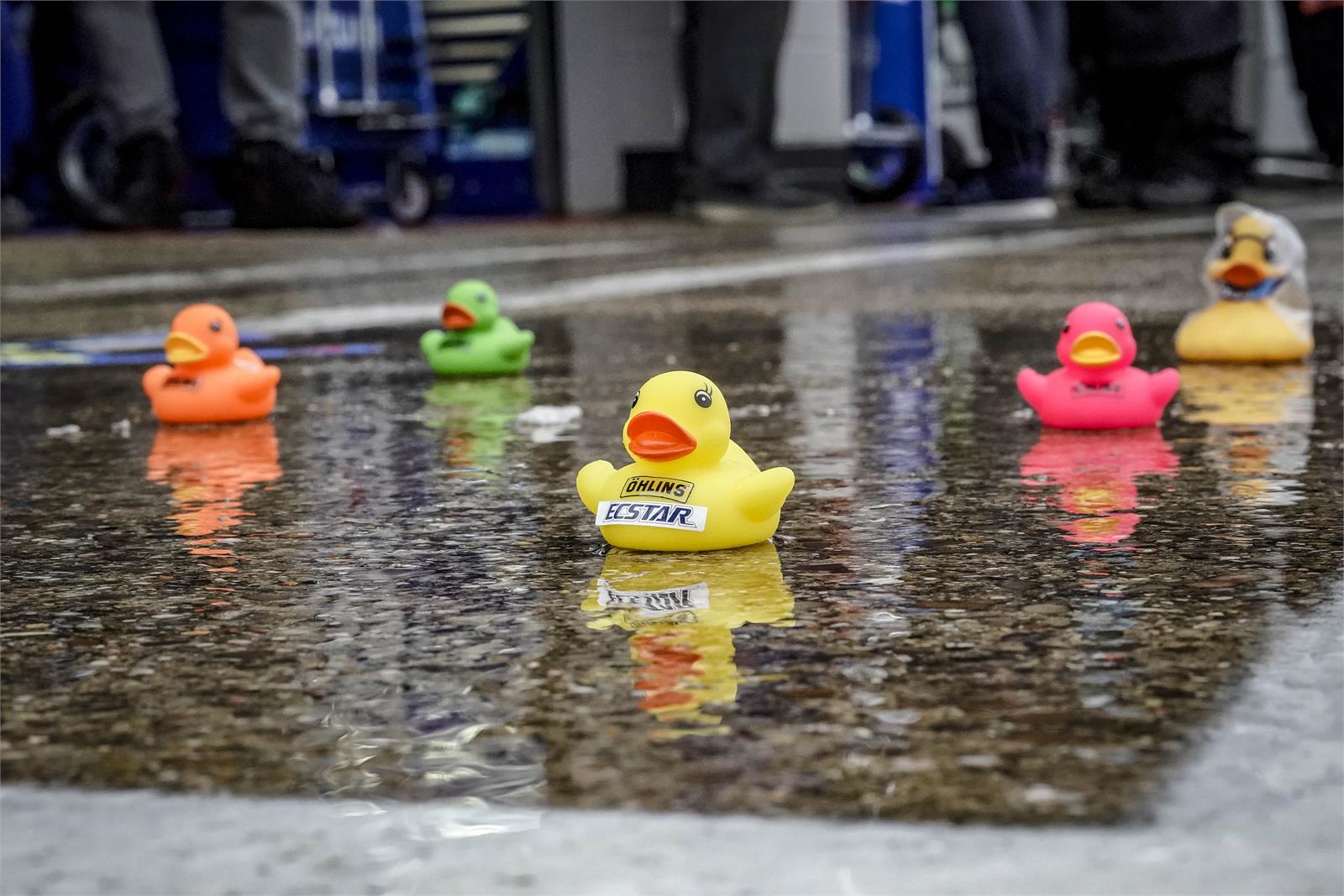
Then, however, something happened. Between March and July, when the F1 race was held, because when the car racers showed up, they came out with comments like Hamilton’s to Crutchlow. Something in that time period happened to make the track more bumpy, more so even than it was before the new surface was laid. There are some possibilities, like the unusually hot summer Britain has enjoyed, but realistically it is difficult to know precisely what made the track deteriorate so much with so little top-level track action.
These bumps became a problem from the beginning of the weekend – even in the dry. Valentino Rossi said that you have to “not care” to negotiate the bumps, whereas Andrea Dovizioso opined that riding around the bumps was the best way. Ultimately, the bike determined the strategy – the Yamaha could handle the bumps well, whereas the likes of the Honda and Ducati couldn’t deal with them so efficiently – especially the Honda.
But that didn’t matter come Saturday afternoon and FP4. When the rain came down at the end of the session, it became a disaster between turn seven, Stowe, and turn ten, Club. In these areas, especially in turns seven and eight – particularly the braking areas for these corners – it was impossible to ride. The problem was that the water was pooling in the bumps, so aquaplaning became both inevitable and extreme. In turn seven at least seven riders ran off track or crashed in the space of one minute or so. Alex Rins was first in, and then tried to direct traffic from the gravel trap to minimise risk for the other riders. Jorge Lorenzo, Aleix Espargaro and Marc Marquez all also ran on, and Tito Rabat crashed. Franco Morbidelli also fell a few seconds after Tito, and when the Spaniard stood up, he was hit by Morbidelli’s 160kg bike, travelling at 100+mph. The result was a broken fibula, tibia and femur for the 2014 Moto2 World Champion. Thankfully, he had a successful operation on Saturday night and on Sunday took his first steps since the accident.
The accident for Tito was a direct result of the weather, as neither he, nor any of the other riders who went into the gravel at turn seven in that period, was able to stop the bike. Bradley Smith said he started braking “500 metres before the corner” and still couldn’t stop the bike, because it just aquaplaned. When the bike aquaplanes, the tyre is not touching the asphalt, of course, so you cannot slow down. Rins said that the water in that section was deep enough to submerge a whole finger. You can have the best tyres in the world, but if you have 10cm of water, it is impossible to control.
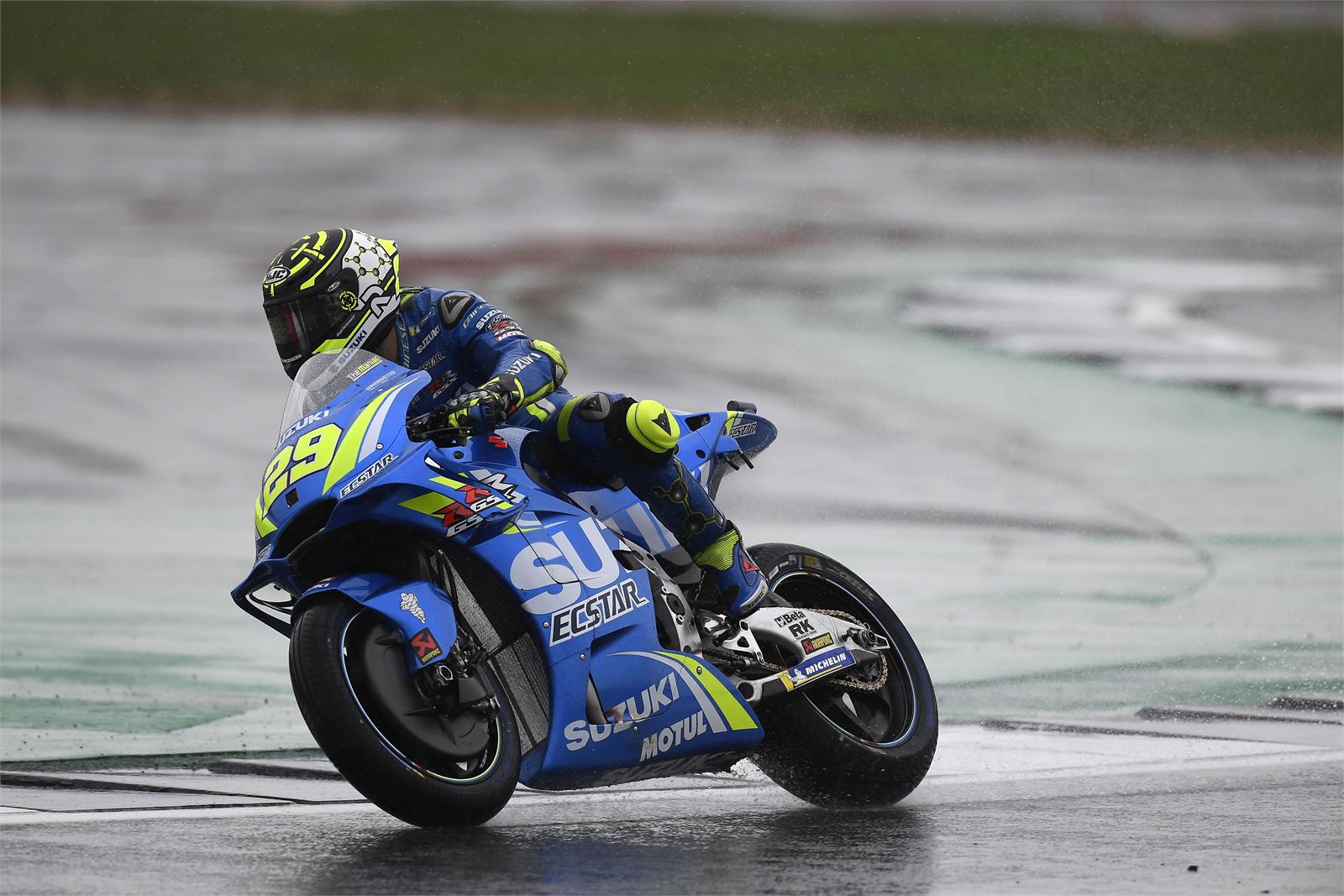
Following this, and considering the incoming day-long deluge facing the whole of the UK for Sunday, Race Direction decided, together with the teams and the riders, that rescheduling the races was the best plan for Sunday. MotoGP was moved to 11:30 am, and Moto3 and 2 would follow the premier class race.
This didn’t work. Already in Moto3 warm up on Sunday morning, the rain had arrived, and by the end of the Moto2 warm up, the track had become shiny, as the standing water was starting to gather.
11:30 arrived, and things were terrible. Alvaro Bautista ran into the gravel at turn eight because he was trying to warm his carbon brakes, and it just locked. Then, Maverick Vinales was seen coming out of pit lane, spinning the rear tyre immediately. Alex Rins reckoned that he was spinning the tyre with 15% throttle in third gear on his way to the grid for the initial start time. They were on the limit just for the sighting lap, and so it was no surprise that the start was delayed – just to ride a MotoGP bike in those conditions would have been nearly impossible, let alone race one.
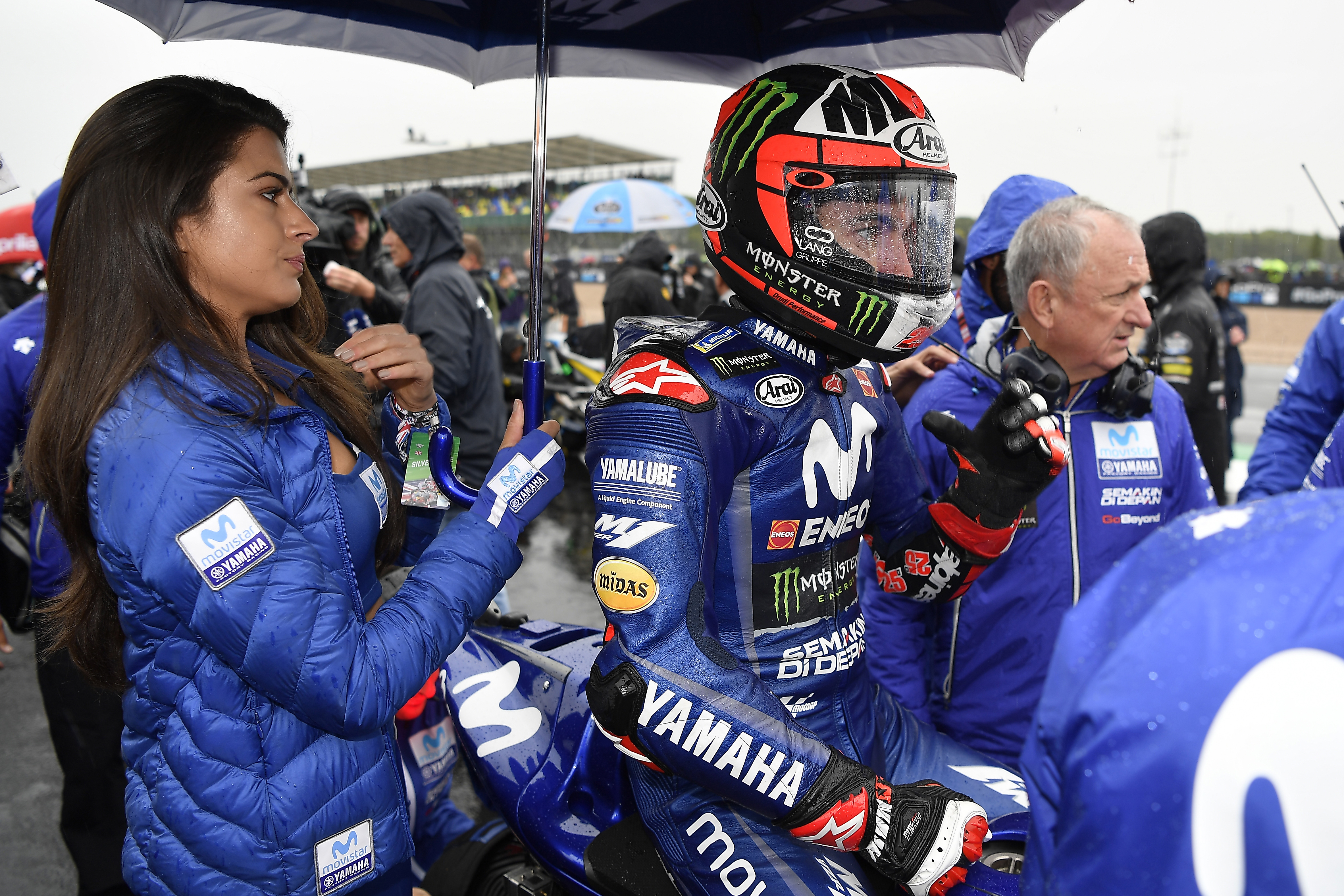
From there, there were many inspections, and many meetings, before at 4pm the Safety Commission decided that the races should be cancelled, because the track would not be in a good enough order to race whilst there was still enough light to race.
There had been the option to race earlier that was presented to the teams, but they needed warm up (these are 270+hp motorcycles, you need to prepare) and they, as well as the circuit, needed time to prepare the track after the warm up. There are procedures which need to be done for safety in a race meeting, and as a result it was not possible to run any earlier than 11:30.
Then there was the possibility to race on Monday – after all, it’s August bank holiday, everyone is free, right? Wrong. MotoGP relies on a vast number of temporary services, such as security guards, and temporary, rented equipment, such as generators, that have been rented for Thursday through Sunday, not through Monday. On top of that, the people who work in the paddock who pay to get there would have to cancel and re-book flights should they be necessary, which is potentially beyond their realistic means – this includes freelance journalists, photographers and such like. Additionally, and arguably more importantly, the teams cannot afford to stay one more day, especially the private teams who are tight on budget as it is, and furthermore the TV companies do not have the time slots available to them to be able to air races on Monday. It happened in Qatar in 2009, but it happened in Qatar in 2009 because the Losail International Circuit could afford to make it happen, Silverstone couldn’t.
But how did we arrive in this situation in the first place. It has already been explained that the track was resurfaced over the winter, and that it initially was good, and later became not-so-good with the bumps. But the bumps were just one part of the problem.
With a new surface there is one guarantee: for the first year or two, the porousness of the surface will be poor. Think Sepang’s new surface, which takes basically half a day to dry out from just a small shower. It happened to F1 in Korea back in 2010 – the surface had been down for a matter of weeks, so a downpour before the race halted proceedings by an hour and more. The issue was more extreme, though, this weekend in Silverstone, because instead of having poor porousness, it had none. A light shower would be okay, as we saw in Moto2 FP2, that was manageable for the riders; but a deluge like we saw on Saturday, or the prolonged downpour of Sunday was too much for the track to drain, and even drainage ditches and cuts in the track could not help the situation. After so long, the water just started to build up, until you basically ended up with something resembling a lake – and this was after two hours.
The day-long drenching the new Silverstone surface took today was well beyond its drainage capabilities, and mixed with the pooling in the bumps, as well as the polished parts of the track (from cars bottoming out at the end of straights when under maximum loading, causing the abrasiveness of the stones in the asphalt to disappear) it became an impossible situation for the riders, and an equally hard one to call for the Race Direction.
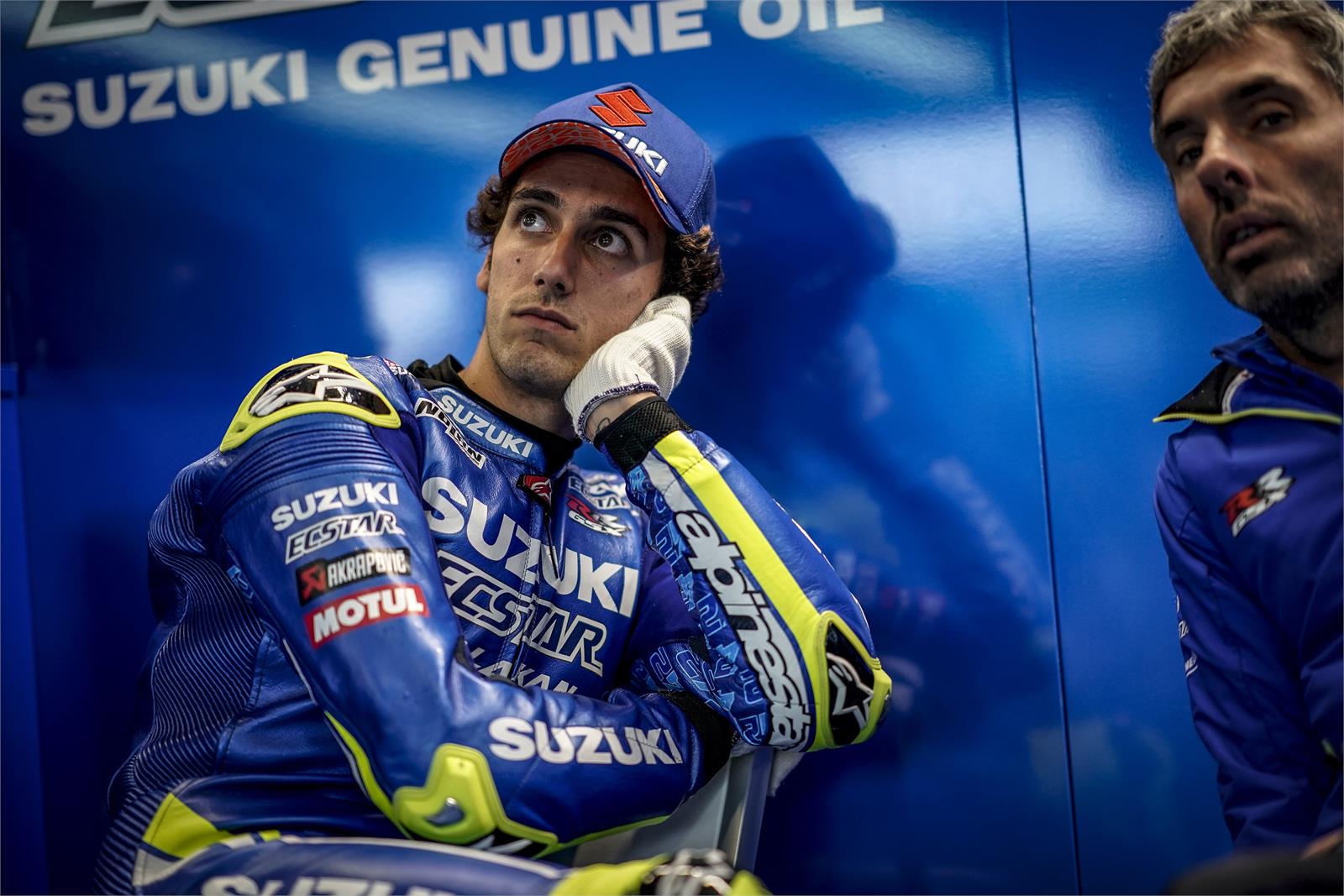
It is at this point that it is important to point out that in 2011 there was an almost identical situation, with rain all day, and all three races went ahead, and just last year in BSB there was a race in biblical conditions, but everyone went out, it was deemed safe enough to ride, although there were only seven finishers. Today was normal rain, nothing spectacular, just normal rain, over a long period of time, which is common in Britain, and it was deemed unsafe.
So, was it Race Direction’s bad decision, did they listen too much to the riders? Well, no. Firstly, it is my opinion that the decision to continue the race last year in British Superbike when so many riders were crashing was a bad one, because it was clearly unsafe (although in the same moment, BSB goes to tracks like Cadwell Park and Oulton Park, which are dangerous tracks, so the standard is maybe lower). Secondly, in 2011 the surface could deal with the water, so aquaplaning was less.
The fact that the new surface could not deal with the water on Saturday, or Sunday, shows that the surface was the issue, and therefore two groups of people are at fault. One is Aggregate UK, who provided and laid the surface over the winter; a surface which was produced and designed in the UK, yet could not absorb any water whatsoever. Second, you have to put some blame at the door of Silverstone, because they employed the services of Aggregate UK. Ultimately, Aggregate UK did a terrible job, they laid a surface which has no drainage and is in fact worse than the one they replaced, and Silverstone have a right to feel cheated by them, as do the fans, teams, riders and the Championship.
In a press conference after the decision to cancel the races, Franco Uncini said that there have been demands for a new surface to be laid at Silverstone for next year, and before that there will be an investigation into why exactly the circuit could not absorb any water. How exactly Silverstone manages to afford another full resurfacing job just a few months after the last one remains to be seen, and it remains to be seen if it is even possible. Once the new surface has been laid, there are intentions to test the track in the wet although there have been admissions from Mike Webb (Race Director) that after the experience of artificially wetting the Losail track earlier this year, it is difficult to see how that could happen.
Ultimately, it was a combination poor asphalt being poorly laid, a remarkable British summer which left the track unprepared for the wet (Saturday and Sunday were probably the worst two days this new surface has seen, weather-wise) and a day with no break in the weather which conspired to create this British MotoGP disaster, and at the moment it is unsure how it can move on from this.
One thing, though, is for sure. Silverstone want to continue to host the British Motorcycle Grand Prix, and MotoGP are keen to continue to have a British Grand Prix. Over the next months we should see whether the British Grand Prix will continue in the near future, and whether it will continue at Silverstone.
Featured image courtesy of Yamaha Motor Racing.

